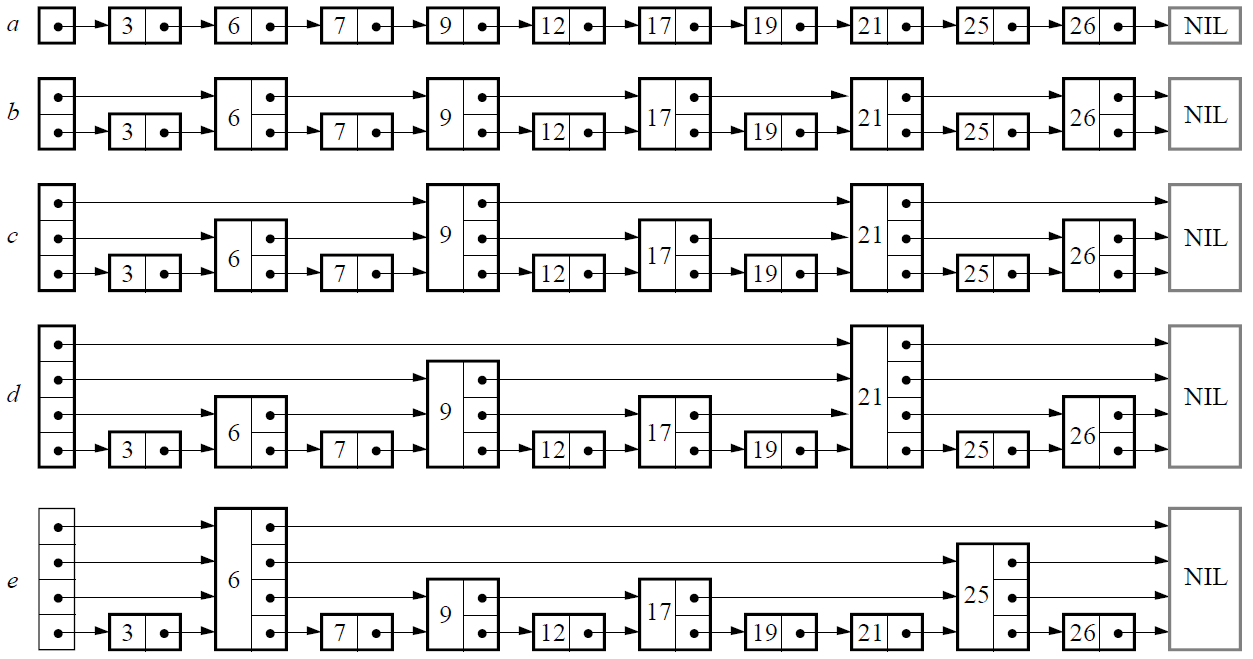跳表介绍

Skip lists are a data structure that can be used in place of balanced trees. Skip lists use probabilistic balancing rather than strictly enforced balancing and as a result the algorithms for insertion and deletion in skip lists are much simpler and significantly faster than equivalent algorithms for balanced trees.
跳表是一种可以用来代替平衡树的数据结构,跳表使用概率平衡而不是严格执行的平衡, 因此,与等效树的等效算法相比,跳表中插入和删除的算法要简单得多,并且速度要快得多。
跳表是由包含多个级别的链表组成,最低级别的链表存储了所有的主键并且按序链接
java跳表
https://docs.oracle.com/javase/8/docs/api/java/util/concurrent/ConcurrentSkipListMap.html
跳表结构
- 多条链构成,是关键字升序排列的数据结构;
- 包含多个级别,一个head引用指向最高的级别,最低(底部)的级别,包含所有的key;
- 每一个级别都是其更低级别的子集,并且是有序的;
- 如果关键字key在级别level=i中出现,则level<=i的链表中都会包含该关键字key;
ConcurrentSkipListMap和TreeMap类似,它们虽然都是有序的哈希表。但是,第一,它们的线程安全机制不同,TreeMap是非线程安全的,而ConcurrentSkipListMap是线程安全的。第二,ConcurrentSkipListMap是通过跳表实现的,而TreeMap是通过红黑树实现的
跳表分为许多层(level),每一层都可以看作是数据的索引,这些索引的意义就是加快跳表查找数据速度。每一层的数据都是有序的,上一层数据是下一层数据的子集,并且第一层(level 1)包含了全部的数据;层次越高,跳跃性越大,包含的数据越少。跳表包含一个表头,它查找数据时,是从上往下,从左往右进行查找。
ConcurrentSkipListMap优点:
ConcurrentSkipListMap 的key是有序的。
ConcurrentSkipListMap 支持更高的并发。ConcurrentSkipListMap 的存取时间是log(N),和线程数几乎无关
使用场景举例
在其他线程向集合插入数据时安全的获取一个只读快照
实时流数据处理:最近5分钟订阅的最新消息列表
ConcurrentSkipListMap<Instant, String> events = new ConcurrentSkipListMap<>(
Comparator.comparingLong(v -> v.toEpochMilli()));
参考
[1] Skip Lists: A Probabilistic Alternative to Balanced Trees